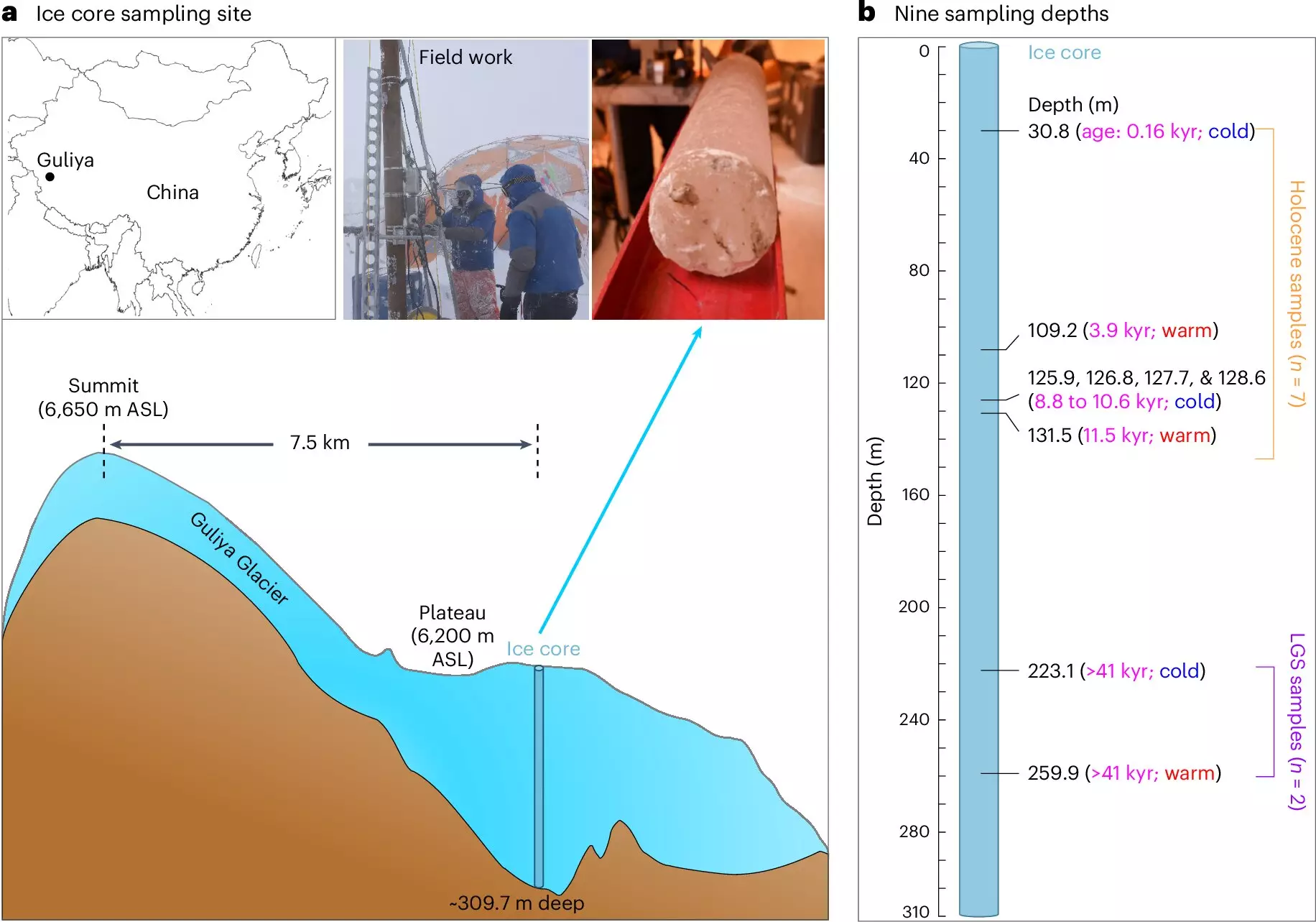In an exceptional intersection of climatology and virology, a groundbreaking study has illuminated the wealth of knowledge trapped within glacial ice. Specifically, the Guliya Glacier, located on the Tibetan Plateau at elevations exceeding 20,000 feet, has emerged as a vital source of paleoclimatic information. Researchers have unveiled nearly 1,700 distinct viral species encapsulated in ice core samples extracted from this glacier, a remarkable three-fourths of which are new to science. This discovery not only underscores the glacier’s significance in understanding climate change but also challenges our perception of viruses, hinting at their integral role in past ecosystems.
The Methodology and Findings
The study employed advanced techniques in sequencing to unravel the genetic makeup of these ancient viruses, allowing the researchers to investigate their evolution over an extensive timescale of approximately 41,000 years. What’s particularly striking is the finding that many of these viruses thrived in different climatic periods, with a notable focus on the transition from the last glacial period into the Holocene, around 11,500 years ago. This time frame is critical as it marks a significant climatic shift that influenced microbial life. Dr. ZhiPing Zhong, the study’s lead author, emphasizes that understanding the dynamic relationship between viruses and climate could illuminate their potential effects on contemporary ecosystems experiencing rapid change.
Despite the promising insights, researchers remain cautious, noting that these conclusions are preliminary. The correlation between viral activity and specific climate shifts opens a key debate about the role of viruses as agents of change in natural ecosystems. The study effectively demonstrates that viruses are not merely harmful pathogens but may play a complementary role in ecological responses to changing climates.
With the current trajectory of unprecedented glacier melting due to climate change, the rush to extract these ice cores is becoming more pronounced. Each layer of ice serves as a meticulously preserved record of Earth’s climatic history, akin to a time capsule offering potential insights into historical pathogens’ adaptations. Interestingly, while most viruses found were unique to Guliya, a significant fraction showed similarities to known viral species from other global regions, suggesting that these ancient viruses might have been transported across vast distances. This observation propels the inquiry into how microbial life migrates and adapts in response to environmental pressures.
The implications are far-reaching: understanding these ancient dynamics might equip us to forecast how current viral populations could react as ecosystems face modern threats posed by climate change. For instance, if viruses could adapt to different temperatures and conditions in the past, it raises questions about their potential resilience or virulence amidst current global warming scenarios.
This study aptly demonstrates the power of interdisciplinary collaboration. Researchers from various scientific disciplines at Ohio State University came together to tackle the complexities of studying ancient viruses, merging expertise in polar and climate research with microbiome science. Matthew Sullivan, a co-author of the study, noted that the synergistic benefit of combining disparate fields of study allowed them to transcend traditional research barriers, unveiling a nexus of knowledge that would likely remain unexplored in isolation.
Shared insights and methodologies enable scientists to contextualize their findings within broader environmental frameworks, making it possible to address fundamental questions about life’s history and its interconnectedness with the climate. The importance of this collaborative spirit cannot be understated, particularly in tackling the multifaceted challenges posed by climate change.
As researchers wisely urge, the clock is ticking. The unique opportunity to study ancient viral genomes and glean insights into Earth’s climatic past must be prioritized before accelerating global warming irrevocably alters or eradicates these glacial archives. The advent of new technologies could usher in a new era of discovery, expanding our understanding of both Earth’s history and the potential for extraterrestrial life, especially in icy landscapes on other planets.
The Guliya Glacier’s ancient viruses represent a significant yet often overlooked facet of climate science. As researchers continue to peel back the layers of this frozen trove, the knowledge they uncover could reshape our understanding of ecological resilience, adaptability, and the intricate relationships between life forms and their environments throughout history. Our future discoveries may well rely on our commitment to understanding the past, navigated by the collaborative spirit that underscores this vital field.


Leave a Reply